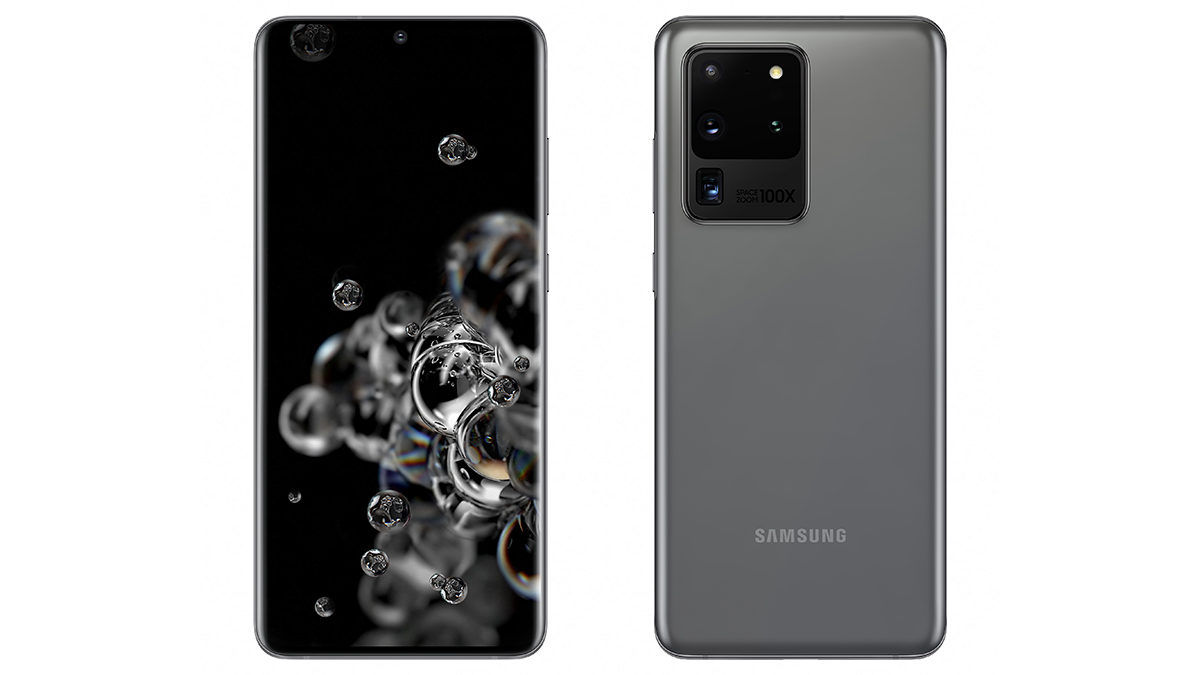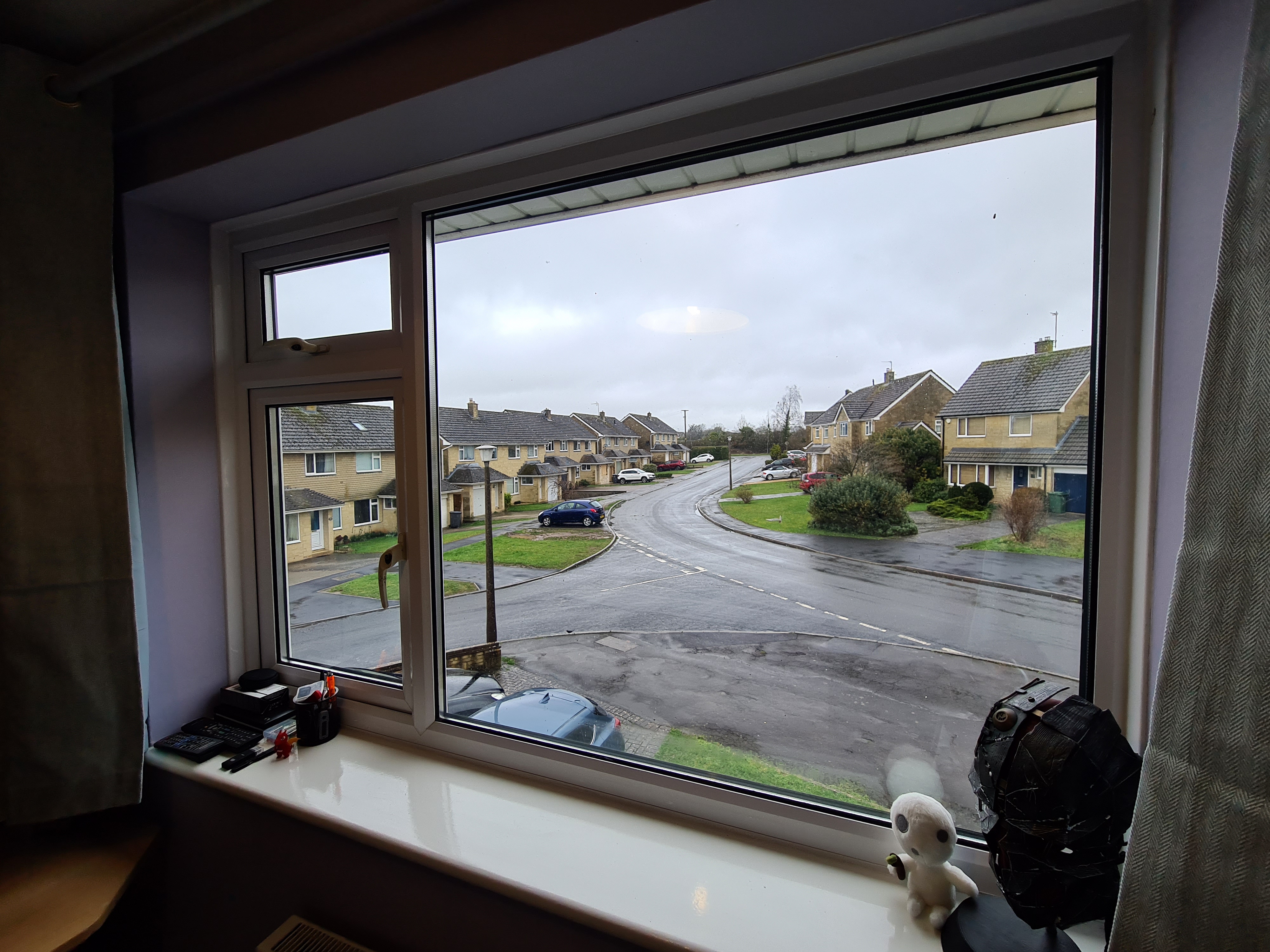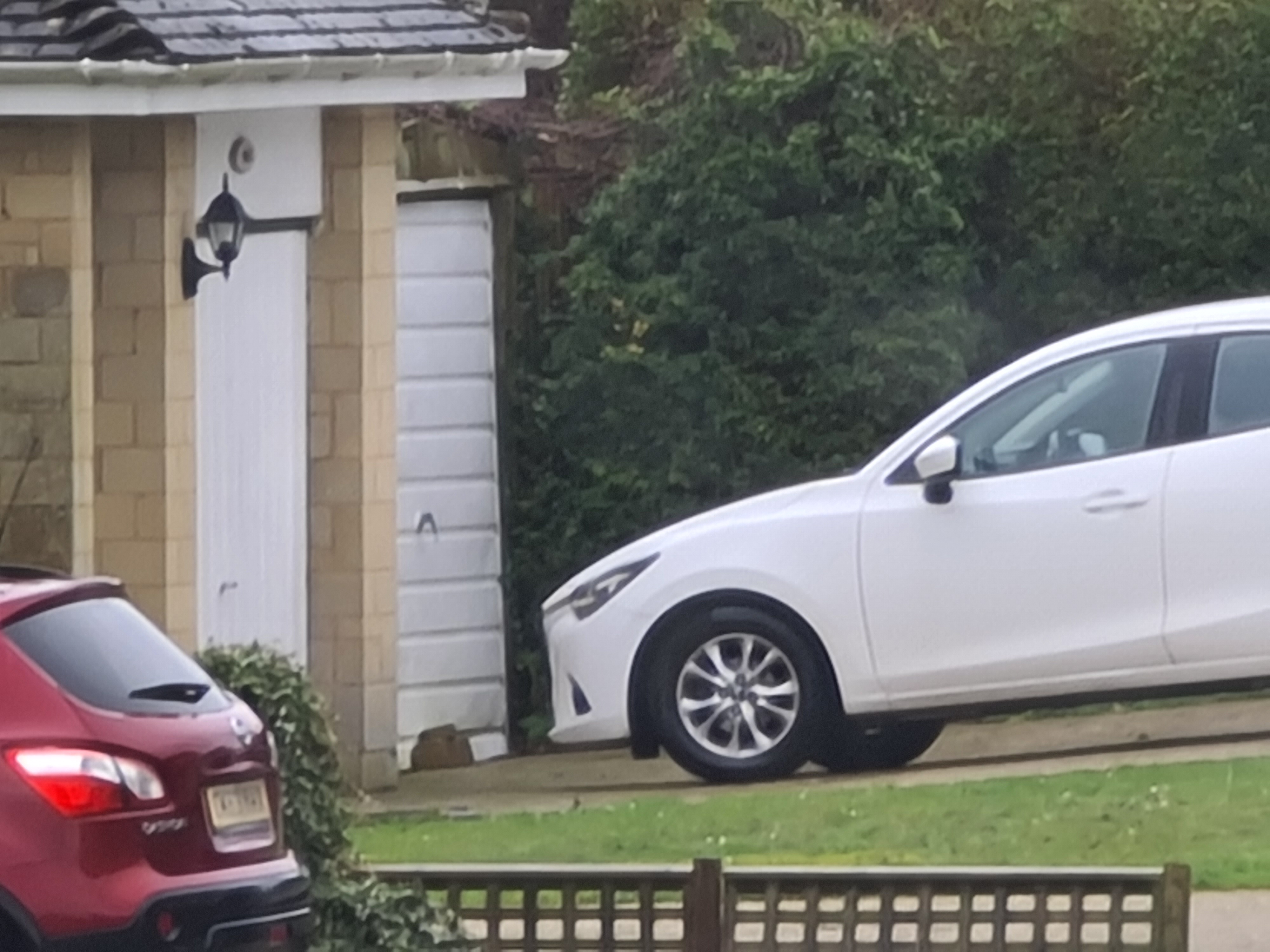Samsung Galaxy S20 Ultra review: a bludgeoning hammer blow to Android rivals
T3's Samsung Galaxy S20 Ultra review is here


There's definitely a uncouth, almost brutal way in which the Samsung Galaxy S20 Ultra assaults the Android phone market in my mind, with it wielding hyper premium hardware, connectivity and camera specs like a barbarian warlord in the midst of battle. Few, if any, Android rivals can stand mano-a-mano with the Ultra right now and walk away triumphant — it is simply too well equipped and Samsung is simply too well versed in creating quality flagship phones. The price will make many people's eyes water, and it is obviously far too much phone for the majority of users, but if you are a tech enthusiast and have pockets deep enough to wield it, then the S20 Ultra is impossible not to recommend.
-
+
Huge, buttery smooth 120Hz screen
-
+
Hyper-premium internal hardware spec
-
+
Versatile, feature-packed camera system
-
+
Supports all 5G standards (sub-6, mmWave, NSA)
-
+
Impressive Geekbench 5 and 3DMark scores
-
+
Capacious 5,000 mAh battery stack
-
-
Obviously, the price, which is very high
-
-
Turn 120Hz on and battery life is affected
-
-
Would you be better with a Note 10+?
Why you can trust T3

Samsung Galaxy S20 Ultra - key specs

Dimensions: 167 x 76 x 8.8 mm (6.57 x 2.99 x 0.35 in)
Weight: 221 g (7.80 oz)
Screen: 6.9-inch, HDR10+, 120Hz,1440 x 3200 pixels, 20:9 ratio
CPU: Exynos 990 / Qualcomm SM8250 Snapdragon 865
GPU: Adreno 650
RAM: 12GB/16GB
Storage: 128GB/512GB
Rear cameras: 108MP, 48MP, 12MP, ToF
Front cameras: 40MP, PDAF
Battery: 5,000mAh
OS: Android 10.0, One UI 2.0
5G: Yes
Welcome to T3's official Samsung Galaxy S20 Ultra review. Over the past week I've been trying out the new flagship phone and what follows is my considered take. This review is broken down into a series a key scoring categories, including camera system, design and performance.
For those who want a quick take-away from this review, though, then you can consider the Samsung Galaxy S20 Ultra as, technically, the best Android phone on the market today. It is a phone with an impressive, versatile camera system, hyper-premium internal hardware suite, future-proofed, next-gen 5G connectivity and a huge and immersive screen.
How it achieves its dominance, though, is quite base. These tech weapons the S20 Ultra has at its disposal are wielded in a rather unrefined way, and in some cases feel powerful but a bit rough round the edges and/or completely overkill. The price of this tech is also incredible high, making the Ultra a niche proposition in my mind.
For a longer, more detailed overview then read on for T3's full Samsung Galaxy S20 Ultra review.

The contents of the Samsung Galaxy S20 Ultra box.
Samsung Galaxy S20 Ultra review: price , release date and deals
The Samsung Galaxy S20 Ultra pre-order period stretches from 11th of February to March 8th, 2020. Customers who pre-order the Ultra during this period will received a free pair of Samsung Galaxy Buds+ true wireless earphones for free, and will also receive their phone a few days early.
The Samsung Galaxy S20 release date is 13th of March, 2020. As noted above, pre-order customers will get their handsets a few days in advance of this on sale date.
The Samsung Galaxy S20 Ultra's price starts at £1,199, and stretches up to £1,399 for the max-spec unit. For the best S20 Ultra deals available today, consult the below roundup.
Get all the latest news, reviews, deals and buying guides on gorgeous tech, home and active products from the T3 experts

Without a case, there's no hiding from the S20 Ultra's large rear camera array.
Samsung Galaxy S20 Ultra review: camera system
The Samsung Galaxy S20 Ultra's camera system is, in my opinion, its biggest unique selling point, and so we will begin our analysis of the phone here.
Samsung, like Google has done with the Pixel 4, Apple has done with the iPhone 11, and Huawei did with the Huawei Mate 20 Pro, speaks about its rear camera array as a "signature design element" — something that helps make the phone's overall look and allows it to be easily identified. And, when you flip the phone over, the one thing it does is standout.
The noticeably pronounced rectangular array (which will have to be protected by a case to avoid scrapes and nics in our opinion) houses a seriously powerful quad-camera system, with a 108MP wide-angle main snapper joined by a 48MP telephoto, 12MP ultra wide, and ToF DepthVision lenses.

An example of the S20 Ultra's Single Take camera mode. Shoot once and get presented with a variety of different images.
The big sell, naturally, is the 108MP camera sensor, which as well as enabling super high-resolution shooting and video recording (up to 8K!), delivers the South Korean maker's new 100x Super Resolution Zoom and Hybrid Optic Zoom 10X (more on that below).
And, while we're talking about the rear array's selection of lenses, the S20 Ultra's new Single Take shooting mode makes use of them all. In this mode all the lenses are used when a shot or video is taken and then, post shot, the user is presented with a variety of differing options (10 shots and mini-videos), which sit all under one entry in the phone's image gallery.
This means that, one, your gallery doesn't become overall cluttered and, two, it means you have various different versions of single event capture. I found this great on test as it largely removes moments of indecision when quickly choosing a mode in which to shoot, while helping you not miss the best angle or moment.
Samsung Galaxy S20 Ultra: 100x Super Resolution Zoom image galleries











As you can see from the two galleries above, the S20 Ultra comes with some pretty impressive zoom functionality. From the furthest out ultra-wide setting to 1x, through 5x, 10x, 30x and up to 100x, you have plenty of range at your disposal when shooting. And, as you can see, fidelity remains decent at most zoom levels aside from 100x.
At 100x I have to say that the images I was left with on test, while very much discernible in terms of their subject matter, almost took on a soft-focus watercolour finish, with a photo looking almost like a painting. It was if you'd fed an image into Photoshop and applied an artistic filter to it.
I think the 100x zoom function is neat, and with a proper tripod I'm sure you could get some half-decent images from it, but I question its everyday usability.

Bixby Vision lets you find similar images to the thing you shoot on Pinterest.
Elsewhere, though, the S20 Ultra's camera system really does flex its muscles. The amount of shooting modes on offer is quite remarkable. As well as a maximum freedom Pro shooting mode, you've got a strong panorama option, as well as dedicated settings for food, nighttime and live focus. As you would expect, you can shoot in a variety of aspect ratio's, too.
In terms of video, you can - as aforementioned - shoot at a wide variety of resolutions up to 8K, while the Ultra also delivers a Pro video shooting mode, as well as slow-mo, super slow-mo and hyperlapse options.
What I would say here, though, is that while the 8K video shooting is a technical achievement, and very nice to have, I'm guessing the vast majority of people will not get to enjoy it, as you need an 8K screen to play it back at full fidelity (the phone's is QHD). You can rip single still images out of any 8K footage you take, though, so there's at least that practical benefit of serious eating into your storage space.
Oh, and yes, for those who's boat is floated by AR Emoji and crazy filters, they are very much in residence. There's also a 3D object scanner.

AR Emoji and many more whacky shooting modes are available.
One of Samsung's neatest modes, in my opinion, also makes a welcome return in the Galaxy S20 Ultra - the scan to capture. This gets triggered automatically when you point the camera's lenses at a document (basically something with text on it), and then lets you tap the screen to scan that object into your phone.
For example, as can been seen in the below image, point the Ultra at the latest copy of my daughter's Beano and I can capture the cover only. I've written about this feature before, and think it is very useful for things like capturing menus, quickly getting digital scans of documents, and even capturing pieces of art sans surroundings.

As you would absolutely expect, the S20 Ultra delivers very strong camera images, no matter what you're shooting. Colour balance in particular seems to be a strong point, although there is no getting away from the fact that Samsung still seems to be leaning towards quite heavy post-processing. It's a tad clumsy in my opinion and can lead to sharp edges appearing a little soft.
This is, most likely, more to do with the software algorithms Samsung has picked rather than any hardware deficiency, and naturally there is always a level of subjectivity when determining what are best-in-class standards. But, for me, I'd prefer a little more of the crisper, noisier results delivered by, for example, Sony's Xperia phones.









Vibrancy is good, though, and during testing I never found myself in a position going, "damn, if only I had this shooting option". If anything, with a system so laden with camera tech, it makes Samsung's inclusion of Single Take even smarter, as the one thing all those options does generate - at least in me - is indecision.
The truth is, though, with a 108-megapixel sensor to call on, almost every standard shot in regular photo mode I took delivered. I would say the best thing to do for users of this phone is to lean on the premium hardware you've just bought unless you really know what you are doing.

Watch out ladies, here comes the smoulder...
Lastly, in terms of camera system, the Samsung Galaxy S20 Ultra comes with a 40MP front facing selfie camera. This bad boy can, if you so wish, capture your lovely mug in 40MP glory with or, for the brave, without beauty mode activated. You're not locked to full 40MP fidelity, though, so if you want dial things down a notch for softer, more flattering shots, then the power is yours.

The S20 Ultra has an even bigger screen than the huge Samsung Galaxy Note+. Yikes!
Samsung Galaxy S20 Ultra review: design and screen
Pick up the Samsung Galaxy S20 Ultra and the first thing that you can't help but notice is how large its screen is. At 6.9 inches, it is a match for even the gargantuan Samsung Galaxy Note 10+, which comes with a 6.8-inch screen. Side-by-side these two phones look essentially the same in terms of size, however when you pick them up there is a noticeable weight difference, with the Ultra feeling heavier (221g) and denser than the king-sized Note (196g).
In terms of design, though, we're very much in the same ballpark. The main visual difference, at least from the front, is that the Galaxy S20 Ultra has more S-series wider frame curves, giving it a slightly softer look.
Similarities to the Note 10+, which this phone is closer to in our opinion than last year's range topping Samsung Galaxy S10 5G, continue in the placement of the front-facing camera, which sits smack bang top-centre. It is the same pin-hole design and, until we get underscreen camera tech, is the best alternative if you aren't into motorised pop-ups.
Sticking round the front of the device, you cannot but be impressed by the size and clarity of the Dynamic AMOLED display. This screen has a refresh rate of 120Hz, which even outguns the gorgeousness of the OnePlus 7T and OnePlus 7T Pro panels, which are 90Hz, and that along with HDR10+ and a sharp 1,440 x 3,200 resolution means that anything you display on this display looks absolutely stunning.
That 120Hz refresh rate means that scrolling, app switching, UI navigating and all animated elements are all liquid-butter smooth, and in partnership with the slickness of Android 10.0 and Samsung's best-in-class One UI 2 skin it truly delivers a top-tier general usage experience.
In terms of button placement, the entire left hand edge of the Ultra's frame is untouched, with its volume rocker and power button riding the right hand edge. As you would expect, the phone's USB 3.1 Type C power port is located on the bottom edge, while its SIM and microSD card slot is located on the top edge.
Flip the phone over, and the only design element of note is the phone's pronounced rectangular camera array that we've already become familiar with.
Overall, I feel the S20 Ultra looks pretty damn good from the front, even though there is basically no lovely waterfall curve to its screen, and pretty ropey from the back — largely thanks to that bulky rear camera array. You can absolutely tell that Samsung has designed this phone to be used with a case at all times, as without one whenever you place the phone down or, worse, place it face down, that array draws the attention and not in a super positive way.

From the front the S20 Ultra is a bezel-free beauty, even though it doesn't sport Samsung's trademark waterfall curved edges.
Samsung Galaxy S20 Ultra review: hardware and battery
In terms of internal hardware, as you would expect from the range-topping new hotness in a fresh Samsung phone line-up, the Galaxy S20 Ultra is absolutely stacked. The phone comes with Samsung's rapid Exynos 990 CPU (a Snapdragon 865 in the US), an Adreno 650 GPU, a simply incredible 16GB of RAM (in max-spec) and a chunky 512GB of internal storage space (which can be expanded by microSD).
And, as you can see from the nearby boxouts, that stupidly high hardware spec translates, unsurprisingly, into some pretty darn tasty benchmark scores, both in Geekbench 5 and 3DMark. A single-core score of 939 outguns the Huawei Mate 30 Pro 5G (768), OnePlus 7T Pro (762) and even Samsung's own Note 10+ 5G (752).
Samsung Galaxy S20 Ultra - Geekbench 5 scores

[CPU]
Single-Core Score: 939
Multi-Core Score: 2,815
[Compute]
OpenCL: N/A (App crash)
Vulkan: 3,925
Things are slightly different in terms of multi-core scores, with the S20 Ultra's 2,815 falling short of the Huawei Mate 30 Pro 5G (3074), but beating the OnePlus 7T Pro (2701) and Samsung Galaxy Note 10+ 5G (2529). What is the take-away? These numbers don't really matter — the S20 Ultra is a very, very fast mobile phone and, in the real world, will crush any mobile application you throw at it.
The 3DMark scores do show us, though, that the S20 Ultra, despite not being a dedicated gaming phone, does have more than enough power to run even the most graphically demanding Android games without breaking sweat. I've said many times over the years now that basically every flagship Android phone should easily handle anything the Google Play store has to offer and, once again, the Ultra proves me correct.
Samsung Galaxy S20 Ultra - 3DMark scores

Sling Shot Extreme (OpenGL ES 3.1): 6,765
Sling Shot Extreme (Vulkan): 6,212
Of course, such a ginormous phone needs a large battery, too, and thankfully Samsung has in my opinion actually made a decent stab at handling this, as the S20 Ultra comes loaded with a very large 5,000mAh battery. This is one of the largest battery capacities on the market today in a mainstream phone and, after testing for a week, can happily say that it just about manages to hit my standard for good smartphone battery life.
Use the S20 Ultra on its fresh out of the box settings, which lock its screen at a 60Hz refresh rate, and with medium usage you get a solid day and half to two days usage out of the phone on a single charge without seeing the red battery warning of doom. If you turn on the Ultra's 120Hz mode, though, and you really will want to, then that battery life is reduced. With 120Hz on you're very much looking at a day to a day and a half usage on a single charge with medium usage.
Other tech of note included an underscreen fingerprint reader which works just as well as these Samsung units have been doing for the past few phone releases, 5G support (there is no just 4G version of the Ultra, with the one handset supporting all network connections up to and including 5G) and AKG-tuned stereo loud speakers.
The fact that the Ultra supports all 5G standards also feels like Samsung doing right by the phone enthusiasts who pick this phone up, as if you are dropping well over a grand on a handset, you absolute want to be covered in terms of rapid 5G network coverage. Pair an Ultra with a unlimited data 5G sim and you're in smartphone heaven.
And, finally, before we reach the verdict, let's talk OS. The S20 Ultra comes running Android 10 and Samsung's own One UI 2.0 skin. In my mind One UI remains the best-in-class Android skin on the market and, as you would expect, when partnered with the super slick and streamlined Android 10 delivers a superb mobile usage experience.
Everything is just so intuitively laid out and that mixture of 120Hz screen, buttery smooth Android 10 operation, and flowing One UI menu system means that there's never a moment where you feel let down or, worse, slowed down.

The most important test of all... yes, the S20 Ultra can display the awesome content delivered on T3.com.
Samsung Galaxy S20 Ultra review: verdict
Look, as I said last year when reviewing the Samsung Galaxy Note 10+, this really isn't a phone for everyone, and for more users than not, it will simply be too much phone and too much money to be worthy of serious consideration.
Unsurprisingly, you really don't need to spend north of £1,199 (max spec is £1,399!) to get a quality smartphone experience, and if I were to buy a new Android phone SIM free outright at launch, there is no way I could justify that outlay. On the contrary, I would be looking to spend one-third to a half of that figure, ideally.
But price isn't really a factor here. The S20 Ultra doesn't try to hide what it is, a hyper premium, exclusive smartphone option for those with big mobile performance needs and deep pockets, so to beat it up due to its very high price point seems to miss the point somewhat. Shock horror, a super expensive phone targeted at Android phone enthusiasts isn't for everyone!
However, what you certainly can do is compare what the S20 Ultra delivers to the other hyper-premium and flagship handsets on the market, and for what cost. And I think it is here, where you start factoring in what is delivered by, say, the Huawei Mate 30 Pro, OnePlus 7T Pro Mclaren Edition, Apple iPhone 11 Pro Max and even Samsung's own Galaxy Note 10+, that the Ultra 20 crashes into the real world somewhat.
That's because I would argue these phones offer 95 per cent plus of the experience that the S20 Ultra delivers and do so for less money. And in some cases, much less money. Don't get me wrong, this takes nothing away from the S20 Ultra's abilities, which successfully bludgeon all competition into submission right now, but it does raise the important question of just how much money one is prepared to pay for that last few per cent.
Overall, then, I'd say it is impossible not to recommend the S20 Ultra, which sets a new benchmark for 5G Android phones to chase. But I'd also say this is one of the most niche variants of a mainstream product Samsung has ever made, and only tech enthusiasts and serial first adopters should consider it. I'll be very interested to see what the Samsung Galaxy S20 Ultra retails for in a year...

Rob has been writing about computing, gaming, mobile, home entertainment technology, toys (specifically Lego and board games), smart home and more for over 15 years. As the editor of PC Gamer, and former Deputy Editor for T3.com, you can find Rob's work in magazines, bookazines and online, as well as on podcasts and videos, too. Outside of his work Rob is passionate about motorbikes, skiing/snowboarding and team sports, with football and cricket his two favourites.









